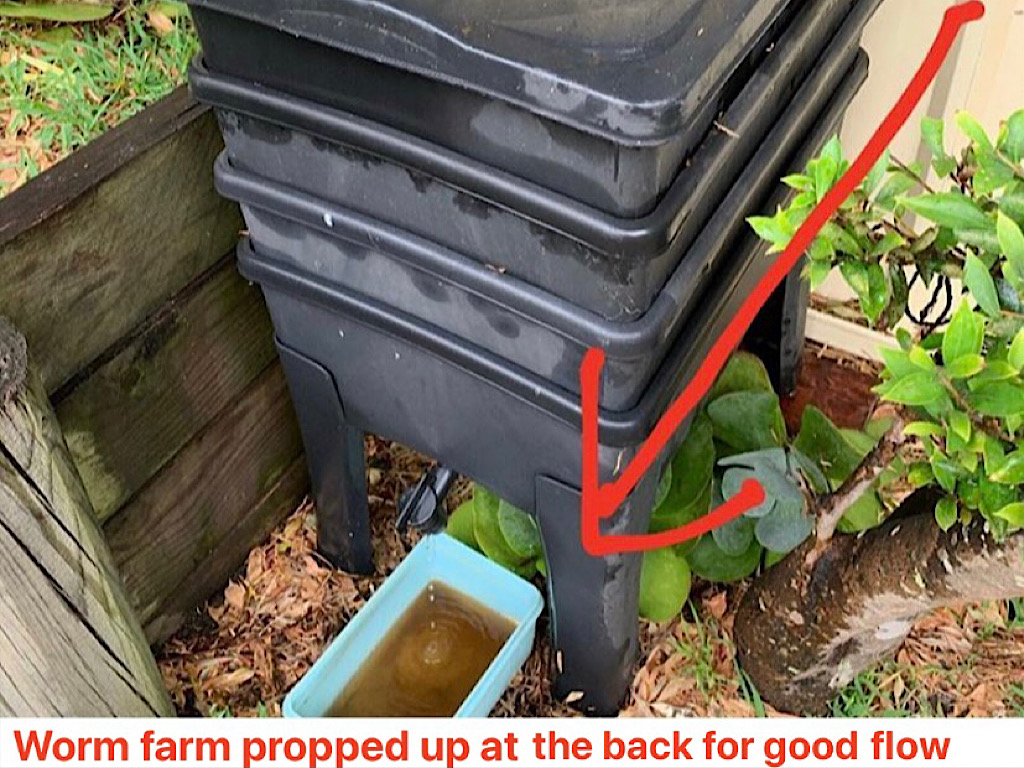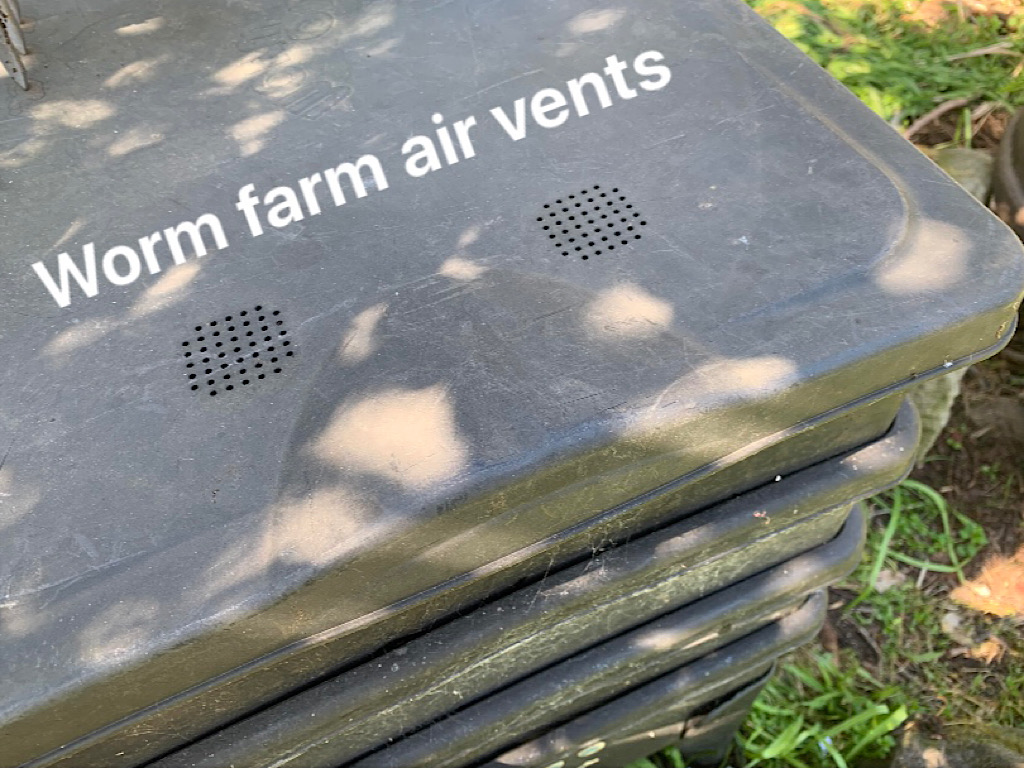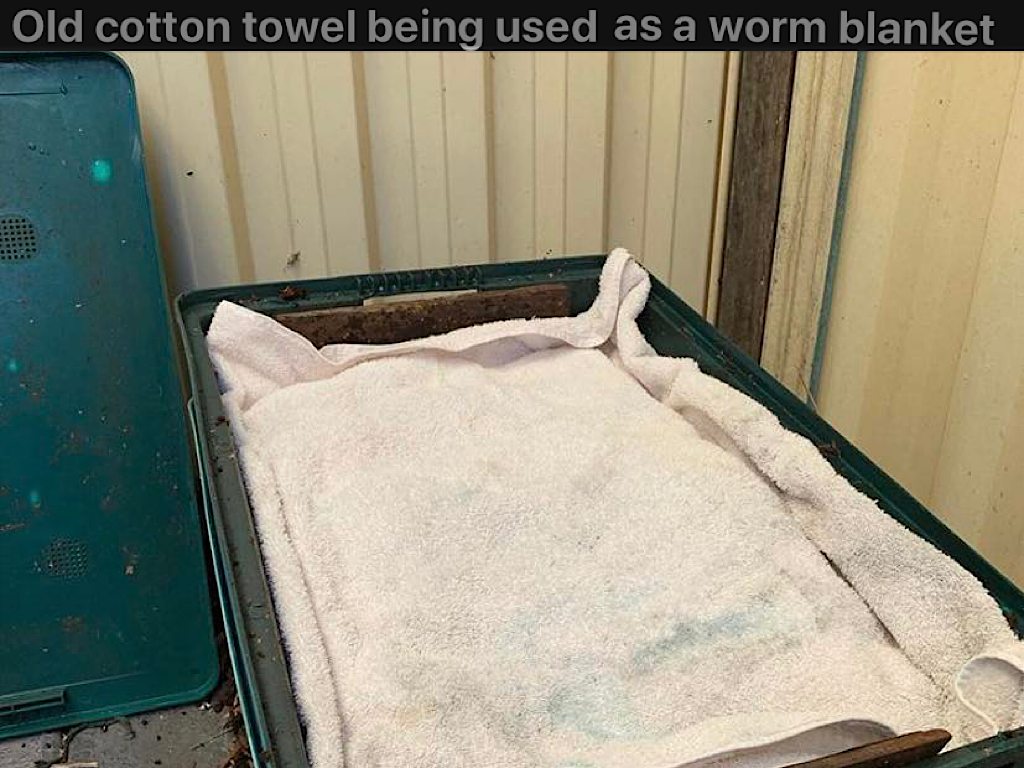Has anyone ever noticed worms grouping up near the lid of their worm farm? There are two different things happening when worms group around the lid…..the first is when they are just hanging around but not trying to escape. The second situation is one of mass evacuation, which results from their environment becoming extreme and harmful to them, such as high heat, lack of oxygen, flooding, acidity or a build up of nitrogen. An above ground worm farm is a shut off environment, so they can’t come and go as they please, so when conditions become less than ideal, you need to know when and how to trouble shoot, or when the worms are just exploring their environment but not fleeing in panic.
If too wet conditions are your problem, you will notice that the bedding is very soggy, there may be no liquid coming from your drainage tap or you may have a foul smell coming from your worms’ home. Firstly, make sure your worm farm is adequately draining. Open up the tap at the bottom and run some water through it. If it doesn’t flow freely out of the tap, check for blockages. If there are no blockages, you might need to prop your worm farm up at the back to create a slope towards the outlet tap. Some people remove the tap altogether as well and just put a container underneath to catch any runoff.
If liquid isn’t adequately draining from your worm farm, the environment will be too wet and soggy for the worms and they might make their way to higher ground, such as the worm farm lid. Worms like a damp environment, but not soaking wet.
Secondly, you might find worms around the lid of the farm if they are lacking oxygen. Giving the contents of your worm farm a bit of a gentle mix every now and again can help keep it aerated and stop it becoming too compact. Also, make sure the air vent holes at the top of the farm are not blocked up, or don’t have anything sitting on them.
Worms might also head towards the lid of the worm farm if it becomes too unbalanced. Ammonia naturally builds up in the worm farm over time if you only have nitrogen rich fruit and vegetable scraps going in. Adding carbon rich materials such as cardboard and also a sprinkle of worm farm and compost conditioner or lime can help keep the balance in check. As a guide, I recommend a ratio of around 50:50 for a good balance. So, for every cup full of kitchen scraps added to the worm farm, you should add an equal cupful of carbon rich material (shredded paper, ripped up cardboard, etc.)
As scraps degrade, they tend to become acidic, and like a nitrogen build up, too much acidity can burn the delicate skin of your worms. This is simple to rectify with a sprinkle every now and then of commercial products like Tumbleweed Worm Farm and Compost Conditioner, or dolomite.
I have also heard it said that worms can be found around the top of the worm farm right before it rains, or during rainfall. The theory is that worms will head to higher ground, but I will be sure to check this though through my own observations and update this article once I have an answer to this.
Sometimes, the answer can be as simple as adding a worm blanket into your farm. Worm blankets sit on top of the scraps and are beneficial in many ways. It gives your wriggly friends an aerated space to get more oxygen if they need it (as long as you keep your blanket damp). They like to lay eggs in the top layers if it has a covering. It gives them the darkness they need to be happy. You can buy worm blankets, or they can be simply made from natural materials such as cotton sheets or old towels, cotton t-shirts, woollen material, or corrugated cardboard. I have found that the addition of any of these will stop worms from congregating around the lid or rim, of the worm farm.



